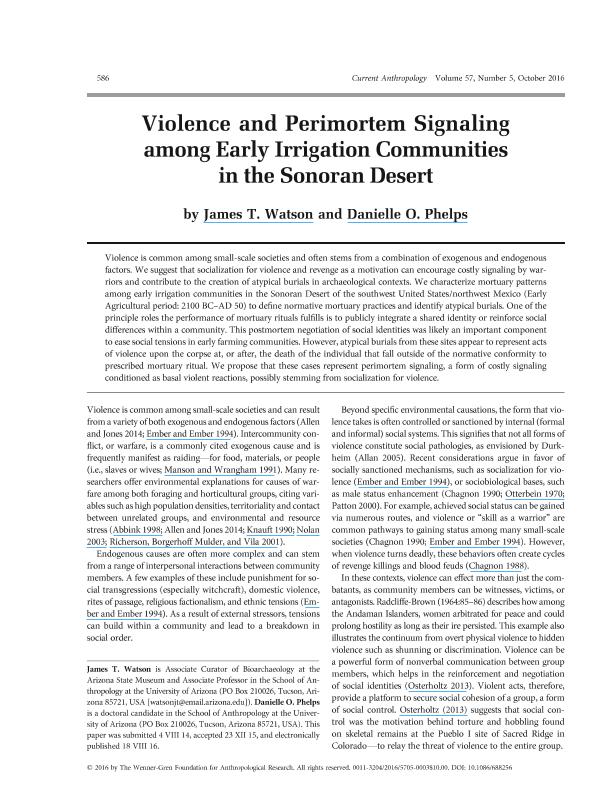Artículo
Comentario del artículo: "Violence and perimortem signaling among early irrigation communities in the Sonoran desert"
Fecha de publicación:
10/2016
Editorial:
University of Chicago Press
Revista:
Current Anthropology
ISSN:
0011-3204
Idioma:
Inglés
Tipo de recurso:
Artículo publicado
Clasificación temática:
Resumen
Participación en calidad de comentarista del trabajo de Watson & Phelps:Violence is common among small-scale societies and often stems from a combination of exogenous and endogenous factors. We suggest that socialization for violence and revenge as a motivation can encourage costly signaling by warriors and contribute to the creation of atypical burials in archaeological contexts. We characterize mortuary patterns among early irrigation communities in the Sonoran Desert of the southwest United States/northwest Mexico (Early Agricultural period: 2100 BC?AD 50) to define normative mortuary practices and identify atypical burials. One of the principle roles the performance of mortuary rituals fulfills is to publicly integrate a shared identity or reinforce social differences within a community. This postmortem negotiation of social identities was likely an important component to ease social tensions in early farming communities. However, atypical burials from these sites appear to represent acts of violence upon the corpse at, or after, the death of the individual that fall outside of the normative conformity to prescribed mortuary ritual. We propose that these cases represent perimortem signaling, a form of costly signaling conditioned as basal violent reactions, possibly stemming from socialization for violence.
Palabras clave:
Interpersonal Violence
,
Sonoran Desert
,
Costly Signaling Theory
Archivos asociados
Licencia
Identificadores
Colecciones
Articulos(CCT - LA PLATA)
Articulos de CTRO.CIENTIFICO TECNOL.CONICET - LA PLATA
Articulos de CTRO.CIENTIFICO TECNOL.CONICET - LA PLATA
Citación
Gordón, Florencia; Comentario del artículo: "Violence and perimortem signaling among early irrigation communities in the Sonoran desert"; University of Chicago Press; Current Anthropology; 57; 5; 10-2016; 602-602
Compartir
Altmétricas




